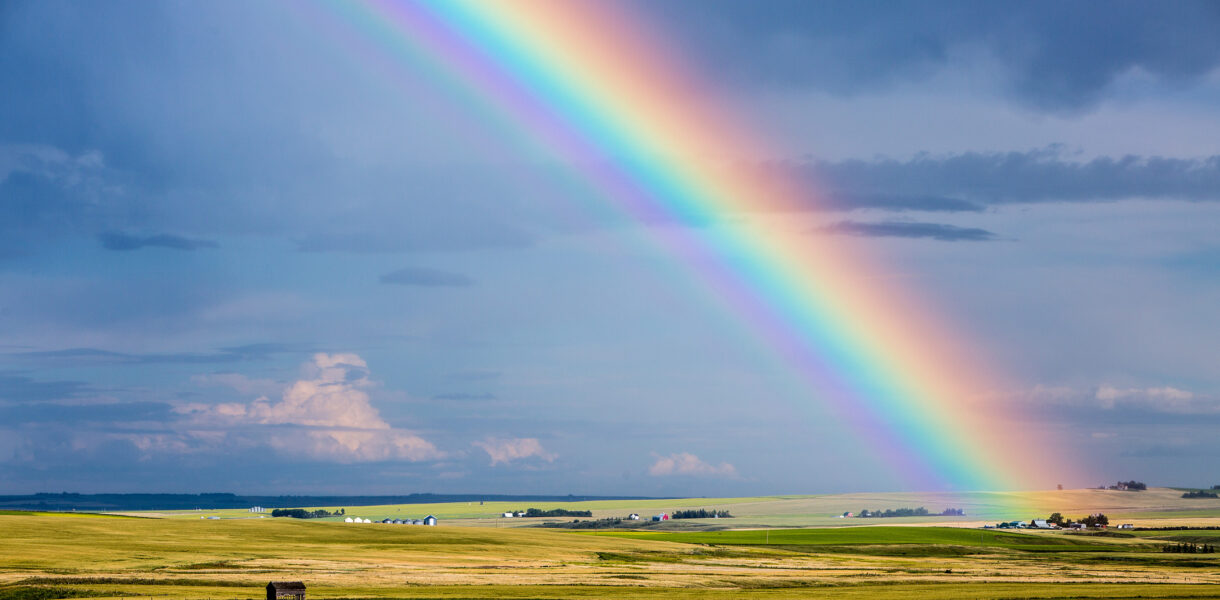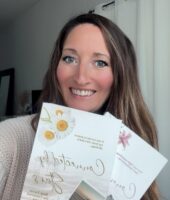Meet Beth Allan, a passionate photographer whose journey into the captivating world of wild weather scenes and storm chasing has been nothing short of remarkable. From overcoming fears of storms to capturing the breathtaking beauty and power of nature, Beth’s experiences have shaped her into a resilient and skilled storyteller through her photography. In this insightful interview, Beth shares her initial inspirations, pivotal moments, challenges faced, safety considerations, and valuable advice for aspiring photographers interested in niche genres like extreme weather photography. Her work not only captures the awe-inspiring aspects of weather phenomena but also serves as a reminder of the importance of environmental conservation and our connection to the natural world.
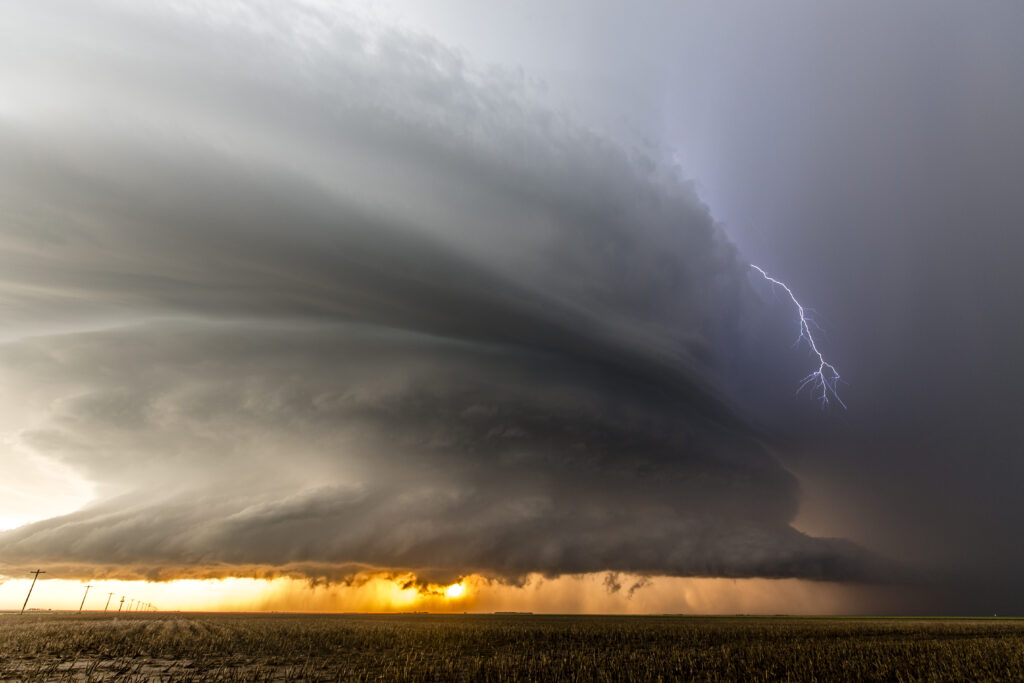
What initially drew you to the world of photography, particularly focusing on wild weather scenes?
That’s a two-part answer for me, but photography was always something I was interested in but I remember looking at the photography class in my high school and thinking, “those kids are way too cool for me” so I picked courses that weren’t photography because I was pretty sure that I wouldn’t fit in with them. I finally decided that I was cool enough to be a photographer as I entered university and purchased my first digital camera (the original Canon Digital Rebel – all 6.3 megapixels of it.
The storm and wild weather aspect of my world showed up a little bit later – I spent most of my childhood being petrified of storms. I would go sleep in the basement when a thunderstorm rolled through (like, one rumble of thunder and I was in the basement. I grew up in southern Ontario, so it’s not like this was in Oklahoma or Kansas or anything) and while I liked watching storms and lightning from far away, as soon as the wind picked up, I was out of there. Twister, that cult classic storm chasing movie, came out in 1999 and the first time I saw it in theatres, I was so scared a I threw up. It triggered something in my brain, though, and years later, as I was finishing and graduating from university, I learned about storm chasing tours.
I ended up going on a tour after I graduated university and that was the thing that changed my life and my direction in the world. Being on the plains, getting up close and personal to monster storms was an adrenaline rush that I’ve never been able to catch doing anything else. The things that nature can do and the beauty that nature can provide, even at her angriest, is breathtaking. The destruction is never something I like to see, but nature is going to nature, whether I’m there or not, and capturing what I call (thanks to W.B. Yeats for coining the term) the terrible beauty of storms is incomparable to anything else.
So, in a nutshell, I learned that I was, in fact, cool enough to be a photographer and then I learned that being terrified of something can turn into intense appreciation of something and my wild weather photography was born.
Can you share a pivotal moment or experience that solidified your passion for capturing storms and weather phenomena?
There have been so many small moments that have all grown together into making storm chasing and weather photography something that I never want to stop, but one moment would be July 7, 2011. This was a day of wild weather in central Alberta (where I was living at the time) and might be the most impressive storm I’ve ever seen in my life. I started the day in Edmonton – I was taking a summer course at the University of Alberta, and I was sitting in class watching a monstrous storm form about 2 hours south of me. When the class ended, I ran to my vehicle and headed south to see if I could chase the storm (even though it had been going for an hour or two already). I only had my old backup camera, my old backup lens, and a 25% full battery, but this was a storm of a lifetime.
I made it south in time to see the last half hour of the storm at its strongest and will never forget how in awe I was of the clouds and the light and the impact this storm made as it marched towards me. I’ve attached a photo I took of that day (the storm with the green grain elevator – BAllan-02 in the Storms folder) and to this day, it’s still one of my favourite photos I’ve ever taken. The storm just took my breath away and I’ve been chasing (no pun intended) that same kind of structure and awe-inspiring beauty in my storms ever since.
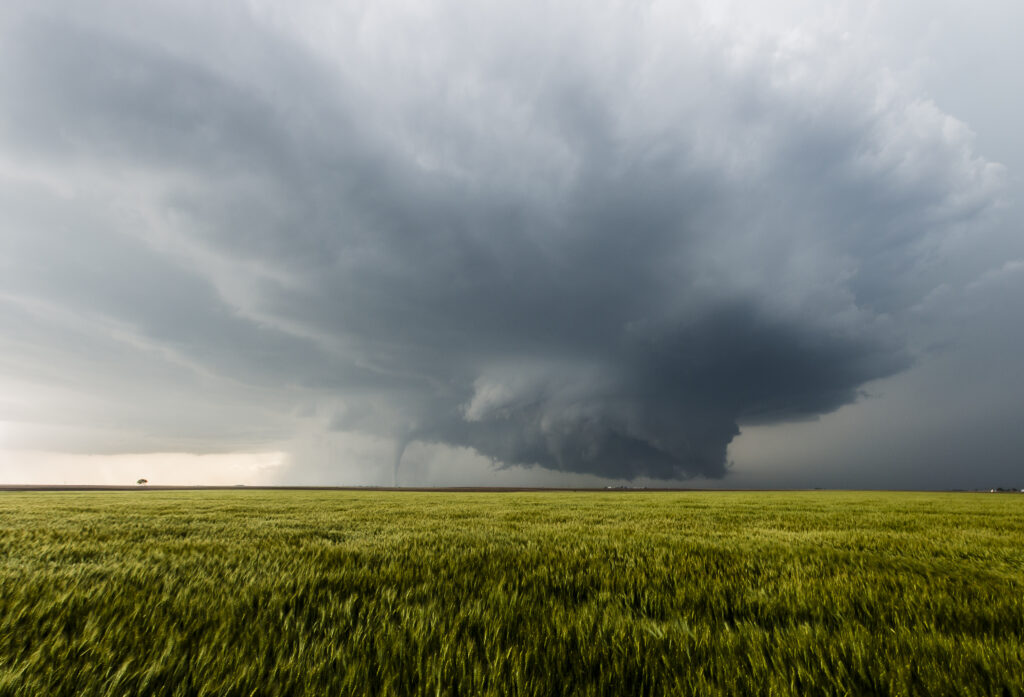
What challenges have you faced in pursuing your photography career, especially in the context of capturing extreme weather conditions?
One of the biggest challenges for me has been in overcoming the gender difference in the weather and storm chasing community. Women are vastly outnumbered by men and that had led to a few difficult moments (or… more than a few). The science community, in general, is often heavily overbalanced in favour of more men, and storm chasing and weather photography requires science in the form of meteorology and atmospheric science, etc. Add to that that storm chasing is a pretty adrenaline heavy activity with a lot of driving and sometimes a lot of risk, and there’s even more men in it.
The overrepresentation of men has slowly been decreasing since I started chasing storms and photographing weather in 2007, but it has been a slow thing. The perception of, “oh, women don’t have the balls to drive toward a tornado” or “women don’t have the brain to understand this science” is something I’ve come up against over and over again. Thankfully, my closest male friends (who are also my storm chasing teammates – we’re on the Prairie Storm Chasers team together) have never been like that, and there are plenty of other really incredible people working to help bring more women into the hobby, the career, and the world of weather. Some of my idols and role models in the weather and storm chasing world (who are incredible women in and of themselves) have also really helped me feel like I belong here.
A second challenge has been in the personal safety sense – storm chasing and weather photography often involves long drives into the middle of very isolated places where you are standing on the side of the road, solo, with very expensive camera gear. I’ve had a few really unsettling experiences with people who have approached me at night, in the middle of nowhere, and made me uncomfortable enough that I actually packed up my gear and left rather than put my safety at risk. There is some extra preparation that goes into solo trips like these ones – from always having someone paying attention to my location, to setting up check ins, to making sure I have enough gas and that my car is properly maintained, etc.
How do you balance the thrill of chasing storms with the safety concerns involved in such endeavors?
The first thing I do is remind myself that I’d rather be alive to see another storm than die seeing this storm. I also am not nearly as much of a risk taker as other storm chasers out there. Because I prefer to photograph and preserve the memory of these storms in my camera, this means I have to make sure I’m far enough away to be able to see the storm. Being too close isn’t pretty; it’s rainy and full of hailstones and windy and none of those things make for a good photograph in my opinion. So the first thing I do is chase from a step back so I have room to maneuver and time to find nicer foregrounds and safe places to stop (off the highways, etc).
Honestly, though, by far the most dangerous part of storm chasing is the sheer amount of driving that we have to do to get to storms each day. I know more storm chasers who have been killed by drunk drivers late at night or in traffic accidents before or after the storm (in no part their fault) than I know storm chasers who have died chasing a storm. I try never to drive tired – I will stop at a hotel to sleep and then get up earlier the next day to get into position before I’ll drive tired, I don’t look at my iPad or cell phone while I’m driving – I’ll pull over to look at them if I’m chasing solo or I’ll chase with a partner who can drive so I can focus on looking at radar and the storm setup, I make sure to have a full gas tank as often as possible (chasing in rural Alberta, Saskatchewan, or even into the northern US plains like the Dakotas, Montana, Wyoming, etc often means few gas stations and of those gas stations, many close early).
I also don’t want to total my car (it’s a lease right now haha) so that encourages me to stay away from big hail as much as possible too.
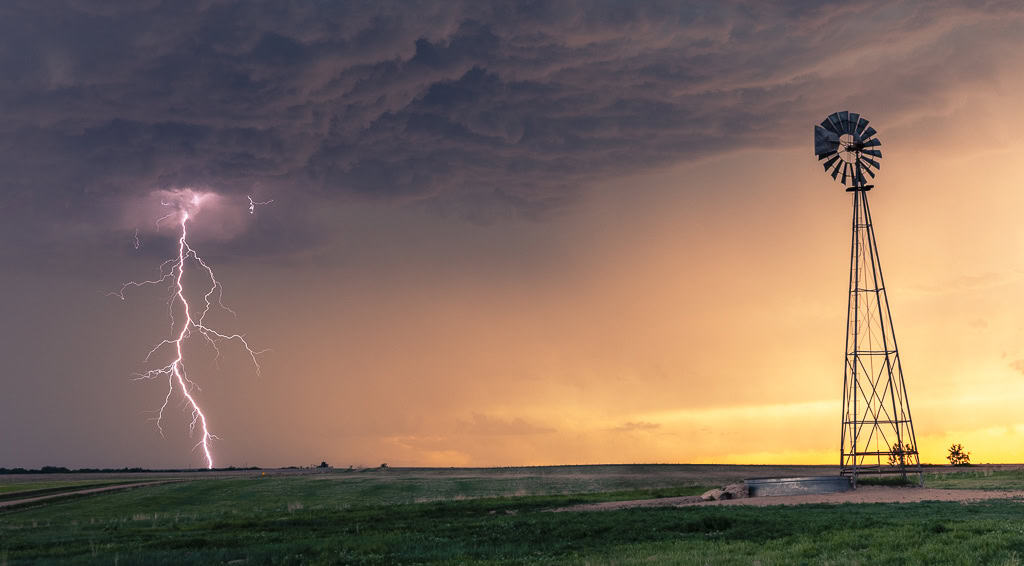
What lessons have you learned about resilience and perseverance through your experiences as a storm chaser and photographer?
Storm chasing is a hobby/profession that breaks your heart at every turn. Setups don’t pan out, the structure you’re hoping for doesn’t materialize, you are left with an overcast day and no storm, and often you have no control over any of it. Nature is going to nature, after all, and humans have no say over what nature wants to do. That fact alone has helped me on so many different occasions. Just being able to take a breath and say, “huh, I drove 8 hours and saw nothing but blue skies. That hurts,” and then wake up the next day to try it all over again has been such a valuable skill for me to develop. Nature is fickle and learning to do the best I can and still failing often and regularly has given me the strength to do other hard things – knowing I’m probably going to fail at them for a bit as well.
Also, I am not a science person. My brain has trouble with math and the weather and atmosphere requires math to fully understand it. Learning that I can learn about these things, even with a brain that wants nothing to do with this type of science, has been a fantastic exercise in that growth mindset development. Sure, I’m bad at math now, but I’ve learned that I might not be bad at all math forever and I’ve learned that I can get better at lots of things even if math remains hard.
Can you recall a particularly memorable or impactful encounter while on a storm-chasing expedition?
Oh gosh, there are so many memorable and impactful encounters… I’ve been chasing and photographing weather for 17 years now, so the hardest part is picking just one encounter. One of my favourites is from July 5, 2014. The night before this day, one of my best friends (Braydon Morisseau – an incredible Canadian storm chaser) and I were talking about the chance of storms on July 5 in Saskatchewan. We waited for the next set of model runs to come out, waited some more, and finally at about 9pm, we decided drive to Saskatchewan from Calgary to see what the day would bring.
We told no one we were going and drove overnight – dodging wildlife, dense fog, and all kinds of other things, to arrive at Kindersley, SK at about 3am the morning of July 5. We really weren’t sure if anything was going to happen (which is why we didn’t tell the internet or friends we were heading over… it would have made the drive back much harder if everyone knew we busted), but went to sleep for a few hours, hopeful. We woke up about 9am to something you never want to see on the day of a storm chase: overcast skies with ongoing precipitation. Since we were already in Saskatchewan, we waited for a few hours to see what would happen and really weren’t hopeful. We packed up the car and decided to drive through the storm that was ongoing south of us (it didn’t look very great, so we did what’s known as “punching the core” when you drive through the heaviest precipitation and hail of a storm to get to the other side the fastest). As we were in the centre of the storm’s core, we got a text from another teammate with a screenshot of the radar right where we were. In the screenshot, we could see what’s called a “couplet” – a radar signature that often means there is an area of strong rotation or a tornado. The couplet was in the field directly to our east. We couldn’t see anything thanks to the heavy rain, but when we emerged from the core, we looked east, and sure enough, there was a large tornado in progress (thankfully) moving away from us.
That tornado started a day of chaos for us – we witnessed another six or seven more tornadoes and because the day wasn’t well forecast by anyone, we were one of a very few storm chasers who were covering the event. Even sweeter was reporting the first tornado and surprising everyone by being there when almost no one thought it was going to do anything that day. The tornadoes were beautiful (I’ve included a photo of one – the bright white tornado with green fields, etc – BAllan-23 or BAllan-24 in the storms folder), there was very little damage, and no one was hurt.
We chased the storms from the AB/SK border all the way to the SK/MB border and the drive back to Calgary the following day was much easier thanks to the incredible display of tornadoes we’d seen the day before.
How do you approach storytelling through your photographs, especially when it comes to connecting people with the often overlooked beauty and power of nature?
Weather and storm photography can be a unique type of photography, because we often have just seconds or minutes to find a composition, set up, make the photo, get the gear back in the car, and get back on the road to stay out of the way of impactful weather. This means that storytelling sometimes happens easily and mostly is really challenging. I tend to rely on things like abandoned houses/structures, solitary trees, animals, and other environmental things in the area to tell my stories. For example, an abandoned house with a supercell behind it often makes the viewer wonder what exactly that old house has seen in the decades (or more) it’s been on the prairie. Animals in front of a storm often make us feel worried or sad for them – will they be impacted by hail or lightning or a tornado? It’s these sorts of things that generate an emotional response to my images and sometimes can connect people to the scene – maybe they can picture themselves living in the house, watching the storm bear down on them. Maybe they can imagine the smell of ozone and rain and wet prairie sage, maybe they can feel the tickle of a breeze before the chaos arrives.
Also, unless you live in a very specific area and go out looking for these types of weather images, most people don’t have the opportunity to see this kind of weather – it’s localized to often very small, isolated areas of the world so by capturing images of these rare types of thunderstorm, it allows people from all over the globe to see the power of nature in ways they might not be familiar with and I hope, in a small way, helps to connect people back to nature, especially those in cities or in places where wildness isn’t easily available.
One other aspect that I try to capture when I can is the idea of human spread – our grasslands and prairie are disappearing under the pressure of population growth in many places – I have photos that were nothing but pristine grassland a decade ago that are now gone thanks to development and creeping city footprints. Having records of these places before humans put our stamp on them is important to me as well.
What advice would you give to aspiring photographers who are interested in capturing extreme weather or pursuing niche photography genres?
First off, I would always recommend that folks who are interested in capturing extreme weather learn their cameras and their gear inside out. You don’t have time to read the manual if something isn’t working while you’re on a storm, and you have to be incredibly efficient and dialled in to have the best shot of capturing weather, lightning, tornadoes, etc. You are also often fighting your fight/flight/freeze impulses when you are up close to something the scale of a supercell, so being able to make photos with your adrenaline going is important as well.
Secondly, I recommend that people take the time to take a storm spotting course (if you’re in the US, then the National Weather Service has great spotter trainings you can take… in Canada, unfortunately there aren’t many (or any) training courses, but there are great online courses that will help you get a good sense of what you’re looking at. Untrained eyes can often see what we call “Scary Looking Clouds (SLCs)” and think that something is a funnel or tornado when it isn’t, so educating yourself about what is dangerous and was is not dangerous is important. Also, the more prep you do in terms of learning about forecasting the better – without forecasting skills, people are much more likely to see nothing than they are to see storms, but are more likely to get into trouble if they do find a storm. I have a list of recommended starter resources on my website that I would recommend people access to get some quick, easy, and free training on all things storm and safety.
Third, take an interest in your local weather community. Make friends with other storm chasers, let people see that you’re interested in weather and active in storm spotting (even if you aren’t ready to chase yet). People often recommend going along with a more experienced storm chaser for your first adventures into the wild world of wild weather, but there aren’t many people who will invite a total stranger into their vehicle for upwards of 12 hours, so while it’s good advice to ride along with someone more experienced, you can’t skip the beginning parts of getting to know the people you might ask first. Don’t just message someone random and ask to ride along – would you want a stranger in your car for hours and hours and hours without knowing a bit about them first?
Finally, if you want to fast-track your storm and spotting and chasing knowledge, consider taking a storm chasing tour. They aren’t inexpensive, but the valuable learning you’ll receive will get you on the road and chasing faster than most other ways. Please do your research, though – there are many storm chasing companies with poor track records, so make sure you use one with a good reputation that has been around for at least five years. I am happy to provide my recommendations if people reach out to me.
In what ways do you think your work contributes to raising awareness about environmental conservation and the impact of human activities on natural landscapes?
My work is a record of the wild, desolate places that exist in the world. As humans step into those places, as development expands, as prairie disappears, and even as climate change shifts when and where storms happen, I hope that my photographs can help us remember what we used to have, how prairie and grassland used to exist, and the importance of having wide open spaces to spend time in.
Looking back on your journey, what personal growth or transformation stands out to you the most?
For me, it would be my belief in myself. My ability to travel alone, to believe that I can learn hard skills, even to find the confidence in myself that I am cool enough to be a photographer, and to be a photographer in a field that can be scary, adrenaline-fuelled, and male dominated. If you had asked teenager me if I would be out there in the world standing in front of tornadoes and feeling at home, I never would have believed you… and yet, here I am. Doing that very thing, being a person who can inspire younger generations to believe in themselves, to go for the things they want, even if they weren’t cool, or don’t look like the typical person doing that thing. And that? That feels pretty darn powerful to me.
Threads: https://www.threads.net/@adolwyn
Facebook: https://www.facebook.com/BethAllanPhotography
